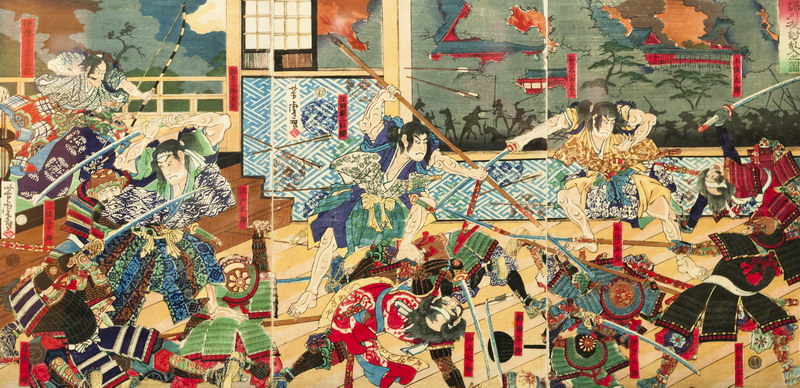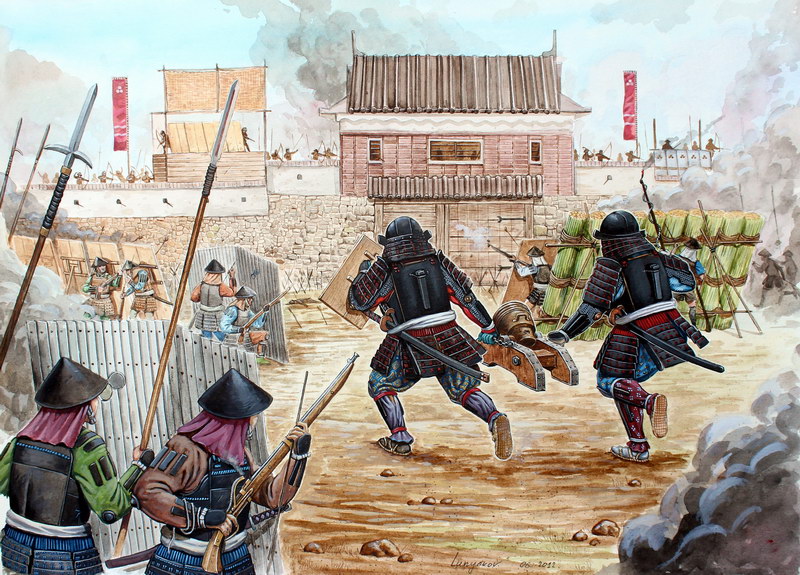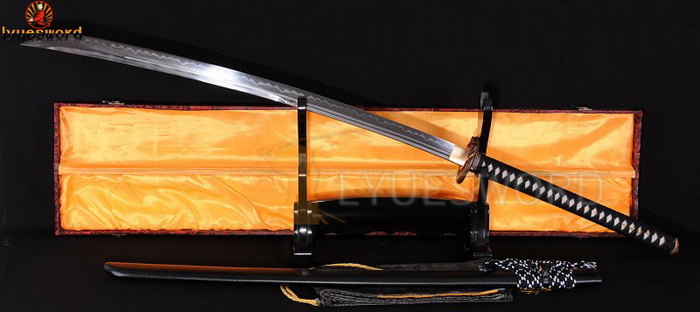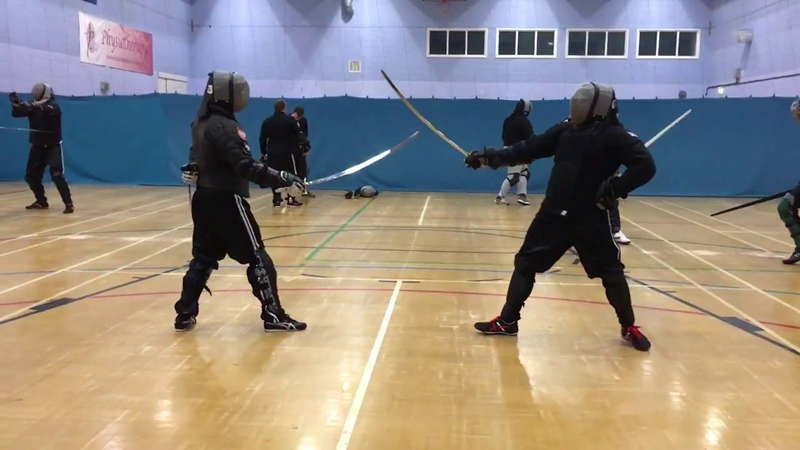By lyuesword | 26 January 2021 | 0 Comments
The Significance of Naginata in Battles, Discipline and Martial Arts
History of the Naginata
According to studies, the Naginata may have come from the much earlier Hoko Yari. However, it can be challenging to determine when it first appeared. Often, it is claimed that the weapon was crafted by the Sohei in the Nara era; but the earliest and clearest references to this date back to the year 1146. This was during the late Heian era.
From 1180 to 1185 during the Genpei war, where Taira pits against Minamoto, Naginata popularity rose and regarded as a highly efficient weapon. During this period, cavalry battles became vital, and the Naginata proves to be an excellent tool for dismounting and disabling riders.

With the widespread use of the Naginata on the battlefield, greaves became part of Japanese armor. Introduction of firearms such as matchlocks or Tanegashima starts in the year 1543. This caused a great drop in the appearance and use of this weapon in battle. During the period, battle tactics also developed and with that, the Yari took the place of the Naginata as the polearm for battle.
An Excellent Defense Weapon Used for Close Combat
The Naginata was highly effective for long-range battles. This is due to the combination of a long pole for extensive reach, unlike the common swords. It has a wide and finely-curved blade for superior cutting power. This was also effective for delivering effective stabs.
During the 10th century, Naginata is being used on the battlefield. Cavalry units used this to repel mounted soldiers by using bows, arrows, and swords.
Like a lot of polearms, the Naginata was effective against mounted cavalry, and those who wielded the weapon were regarded with great esteem. Off the battlefield, women use these weapons to protect themselves and their children. This was common when men in communities were working on the field or were in battles. Because of its size and excellent reach, a woman was able to keep their attacker at a safe and good distance.

However, the introduction of firearms in the mid-17th century completely alters the strategies on the battlefield. With that, the Naginata’s use and popularity dramatically decrease. It becomes a weapon solely used by women in protecting their homes. Eventually, Naginata training becomes a form of exercise and for character development.
In the Edo period, Japanese women coming from Samurai families needs to master the usage of Naginata by the age of eighteen. By this time, polearms have intricate designs and are a vital part of a woman’s endowment.
Hangaku Gozen
It was not only used to protect one’s home, but Naginata is also effectively used by female warriors. In truth, there was a wrong impression about women being submissive during this period.
In reality, women are excellent in utilizing the Naginata as well as other hand-to-hand fighting techniques. To that effect, one of the most popular female warriors is Hangaku Gozen having superior Naginata skills.
She is in charge of a military post with 3,000 soldiers at the Torizakayama castle. The Hojo Shogunate commands more than 10,000 warriors to attack Gozen’s group. However, she led her troops with complete courage and directly charging the Hojo troops, killing a good number of Hojo warriors before finally being overthrown.
Contemporary Usage of the Naginata

The Naginata is an excellent tool for stabbing, hooking and battering an enemy. Due to having a balance mass center, it is commonly whirled to proscribe a wide radius of reach.
Historically, Ashigaru uses the weapon to create enough space on the battlefield. This is because it provides numerous situational advantages over swords. The Naginata offers an extended reach allowing a user to keep his opponent at a safe distance from himself.
Its adequate weight enables the user to have enough power in executing cuts and strikes, even if the Naginata’s weight is a disadvantage. The weight along the end of its shaft plus the shaft itself can be advantageous for offense and defense.
Naginatajutsu and Atarashii Naginata

Along with Jujitsu and Kendo, Naginatajutsu is a kind of martial arts being practiced today. Yet compared to Jujitsu, Naginatajutsu makes use of a weapon solely in practice. There are some styles of Jujitsu that practice with the Naginata. However, higher dan black belters use it.
Naginata is the modern usage of this art, and Bogu refers to the protective armor worn. Today, there are about 80,000 people who practice and study the use of this weapon.
The Second World War resulted in banning every form of martial arts in Japan. However, the government lifts the ban in the year 1950 and the contemporary form of Naginata practice rose. Today it is Atarashii Naginata which translates to New Naginata. Since then, it is practiced as a form of sports which mainly focuses on etiquette and discipline.
Want a unique sword? Feel free to contact us:
Email: lyuesword@hotmail.com
Website: www.lyuesword.com
Custom Sword Page: www.lyuesword.com/Custom-Sword/customization-options/Create-Your-Own-Swords
According to studies, the Naginata may have come from the much earlier Hoko Yari. However, it can be challenging to determine when it first appeared. Often, it is claimed that the weapon was crafted by the Sohei in the Nara era; but the earliest and clearest references to this date back to the year 1146. This was during the late Heian era.
From 1180 to 1185 during the Genpei war, where Taira pits against Minamoto, Naginata popularity rose and regarded as a highly efficient weapon. During this period, cavalry battles became vital, and the Naginata proves to be an excellent tool for dismounting and disabling riders.

With the widespread use of the Naginata on the battlefield, greaves became part of Japanese armor. Introduction of firearms such as matchlocks or Tanegashima starts in the year 1543. This caused a great drop in the appearance and use of this weapon in battle. During the period, battle tactics also developed and with that, the Yari took the place of the Naginata as the polearm for battle.
An Excellent Defense Weapon Used for Close Combat
The Naginata was highly effective for long-range battles. This is due to the combination of a long pole for extensive reach, unlike the common swords. It has a wide and finely-curved blade for superior cutting power. This was also effective for delivering effective stabs.
During the 10th century, Naginata is being used on the battlefield. Cavalry units used this to repel mounted soldiers by using bows, arrows, and swords.
Like a lot of polearms, the Naginata was effective against mounted cavalry, and those who wielded the weapon were regarded with great esteem. Off the battlefield, women use these weapons to protect themselves and their children. This was common when men in communities were working on the field or were in battles. Because of its size and excellent reach, a woman was able to keep their attacker at a safe and good distance.

However, the introduction of firearms in the mid-17th century completely alters the strategies on the battlefield. With that, the Naginata’s use and popularity dramatically decrease. It becomes a weapon solely used by women in protecting their homes. Eventually, Naginata training becomes a form of exercise and for character development.
In the Edo period, Japanese women coming from Samurai families needs to master the usage of Naginata by the age of eighteen. By this time, polearms have intricate designs and are a vital part of a woman’s endowment.
Hangaku Gozen
It was not only used to protect one’s home, but Naginata is also effectively used by female warriors. In truth, there was a wrong impression about women being submissive during this period.
In reality, women are excellent in utilizing the Naginata as well as other hand-to-hand fighting techniques. To that effect, one of the most popular female warriors is Hangaku Gozen having superior Naginata skills.
She is in charge of a military post with 3,000 soldiers at the Torizakayama castle. The Hojo Shogunate commands more than 10,000 warriors to attack Gozen’s group. However, she led her troops with complete courage and directly charging the Hojo troops, killing a good number of Hojo warriors before finally being overthrown.
Contemporary Usage of the Naginata

The Naginata is an excellent tool for stabbing, hooking and battering an enemy. Due to having a balance mass center, it is commonly whirled to proscribe a wide radius of reach.
Historically, Ashigaru uses the weapon to create enough space on the battlefield. This is because it provides numerous situational advantages over swords. The Naginata offers an extended reach allowing a user to keep his opponent at a safe distance from himself.
Its adequate weight enables the user to have enough power in executing cuts and strikes, even if the Naginata’s weight is a disadvantage. The weight along the end of its shaft plus the shaft itself can be advantageous for offense and defense.
Naginatajutsu and Atarashii Naginata

Along with Jujitsu and Kendo, Naginatajutsu is a kind of martial arts being practiced today. Yet compared to Jujitsu, Naginatajutsu makes use of a weapon solely in practice. There are some styles of Jujitsu that practice with the Naginata. However, higher dan black belters use it.
Naginata is the modern usage of this art, and Bogu refers to the protective armor worn. Today, there are about 80,000 people who practice and study the use of this weapon.
The Second World War resulted in banning every form of martial arts in Japan. However, the government lifts the ban in the year 1950 and the contemporary form of Naginata practice rose. Today it is Atarashii Naginata which translates to New Naginata. Since then, it is practiced as a form of sports which mainly focuses on etiquette and discipline.
Want a unique sword? Feel free to contact us:
Email: lyuesword@hotmail.com
Website: www.lyuesword.com
Custom Sword Page: www.lyuesword.com/Custom-Sword/customization-options/Create-Your-Own-Swords
Leave a Reply
Your email address will not be published.Required fields are marked. *